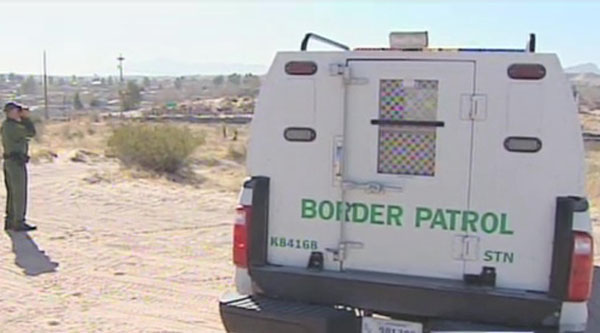EL PASO, Texas -- It was supposed to be a temporary border enforcement measure in El Paso, but 20 years later Operation Blockade has become the primary strategy for curbing illegal immigration in border cities. And it changed the way border patrol agents do their job.
It is all together different from when I came in to where I sit today, said Mark Woody, Assistant Patrol Chief for the El Paso Sector.
Back when Woody joined the force in 1991 El Paso was a hot spot for illegal immigration and agents spent their day chasing hundreds of people who came across the border.
They detained an average of 1500 people a day in El Paso. Many were undocumented workers on the way to someplace else.
I was working July 4, 1993 at the El Paso International Airport alone we had over 1000 apprehensions, Woody said. We average around one a day at El Paso International Airport today so the dynamics totally changed.
Change came abruptly on September 19, 1993. At midnight Border Patrol Chief Silvestre Reyes assigned every available agent to stand guard along a 20 mile stretch of border that was commonly used for illegal crossings.
We lined up all along the border within in view of each other, Woody said.
The massive show of force called Operation Blockade was renamed Operation Hold the Line three weeks later after a backlash from some business leaders in both El Paso and Ciudad Juarez.
In Mexico protestors blocked the international bridge between downtown Juarez and El Paso and called on shoppers to boycott El Paso businesses
There was a lot of skepticism and not very much interest in supporting the operation in Washington D.C., said Reyes in a recent interview with El Paso station KVIA.
But the operation remained in place and marked the beginning of a dramatic shift in strategy that aimed to prevent illegal crossings rather than try to catch people after they were on the U.S. side.
It was later expanded to other cities along the border including San Diego.
Tighter enforcement in urban areas shifted illegal immigration to remote stretches of border in Arizona. Critics say it has led to more to more deaths since people now use more dangerous routes to cross the border cutting through desert or rugged brush.
A lot has changed in the 20 years since the Border Patrol launched Operation Blockade. Customs and Border Protection which includes the Border Patrol is the largest law enforcement agency in the nation.
Border Patrol agents now they have technology and fencing to help them do their job.
The fence does not stop everyone. Some cut through it. Others climb over it slows those who try to sneak across the border and gives Border Patrol agents a chance to catch them.
But now agents assigned a spot on the border to not move to chase people down. They rely on other agents who are not posted at the border to do that.
They remain parked in one spot, eyes on the border and only leave when a replacement arrives to hold the line.


